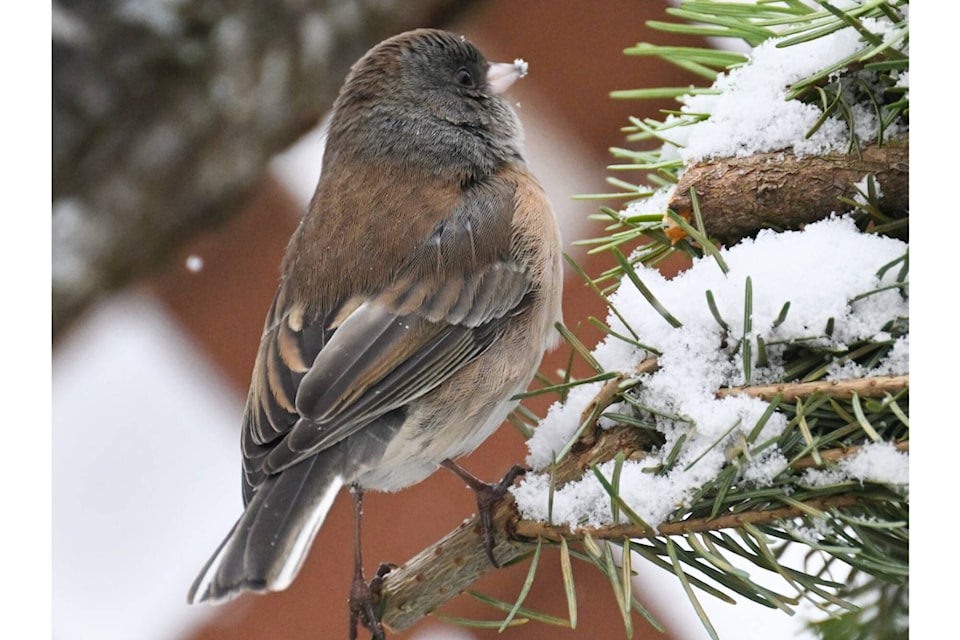Officially known as the dark-eyed junco, these sparrow-sized grey, black and brown songbirds are one of the most widespread landbirds in North America.
Since they seem to arrive in our yards with the onset of winter, many people across their range know them as “snowbirds.”
Chances are you’ve had juncos in your yard this winter. While they are fairly common every winter, the latest Salmon Arm Christmas bird count tallied a record-breaking 828 on Dec. 17. This breaks the previous 20-year record of 387 set in 2016.
Adding the counts from our two other Shuswap Christmas Bird Counts centred in the North Shuswap and Enderby, bird-watchers recorded a collective total 1,304 juncos during these day-long censuses in our area over the holiday season.
While the amounts of black, grey and brown on the junco’s head and body varies a great deal across the continent, their bright-white outer tail feathers make identification easy.
If you see what you think are juncos in your yard, watch as they flit from branch-to-branch or take off from the ground. You can most easily see their white-edged tails in flight.
Read more: Column: Salmon Arm Bay provides a bonanza for migrating shorebirds
Read more: Column: Tiny voles are heavyweights in the Salmon Arm Bay food chain
If you were to see a map of junco distribution, you would notice that juncos occupy three seasonal zones that collectively encompasses most of North America.
The most northern juncos are in a band of boreal forest stretching from Alaska to Labrador.
Juncos visit this zone only to breed and must migrate south for the winter. These truly are snowbirds. The southern-most juncos range occupy a non-breeding zone that includes much of the continental United States and a portion of the Canadian prairies. This is the zone where juncos are found only during the winter. All these birds migrate more-or-less northward to breed.
Then there are several areas in British Columbia, the western United States, the Great Lakes and Appalachian Mountains where juncos are found year-round. The Shuswap is squarely in this year-round zone – lucky us!
With the arrival of spring, our wintering flocks of juncos will disband. By March, we will start hearing male juncos sing their distinctive trilling songs as they establish breeding territories. Locally, junco breeding habitat stretches from lake level to the subalpine. Other juncos, in true snowbird fashion, will leave us and return to their northern nesting territories.
newsroom@saobserver.net
Like us on Facebook and follow us on Twitter
